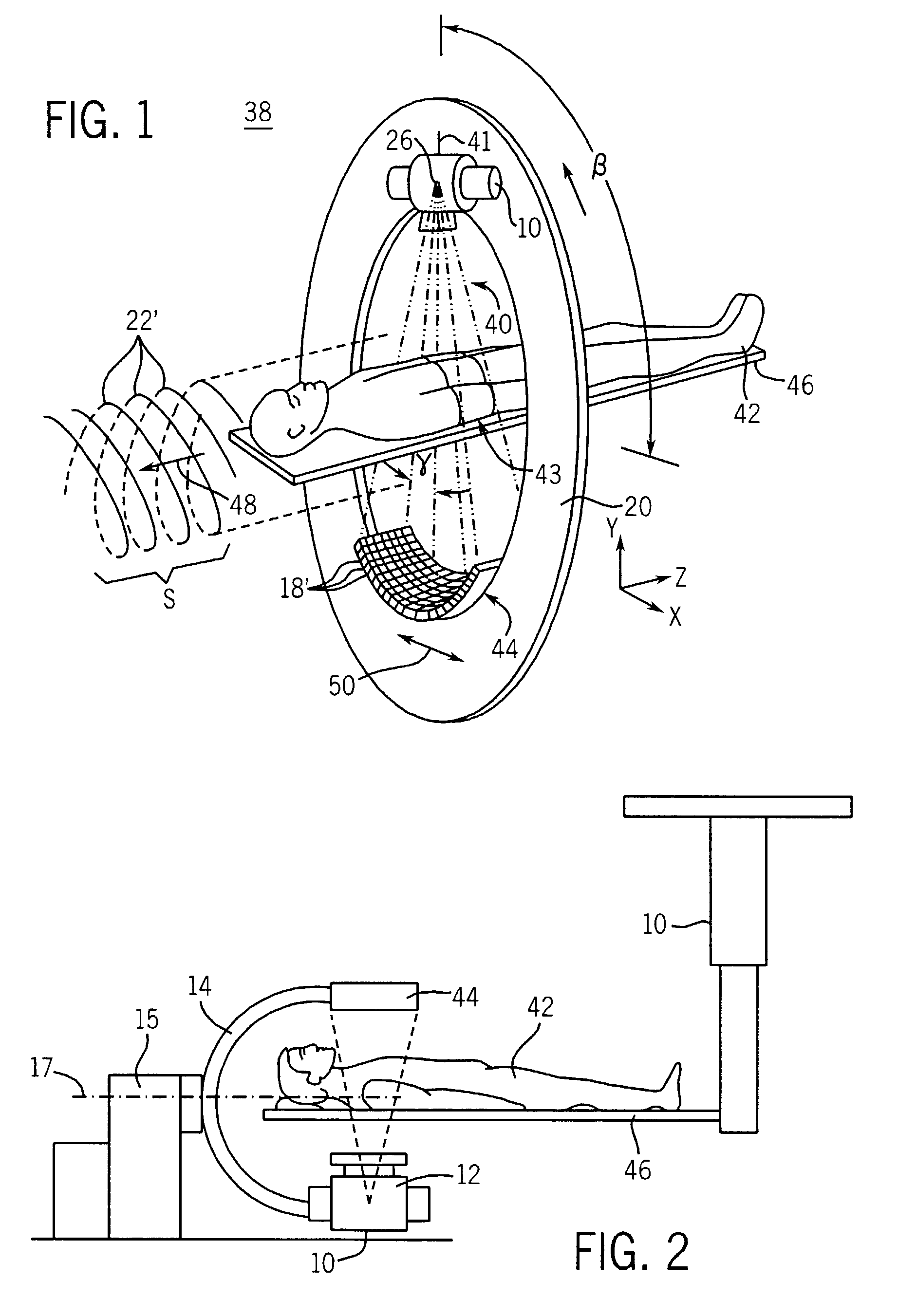Time resolved computed tomography angiography
a computed tomography and time-resolved technology, applied in the field of computed tomography, can solve the problems of low signal-to-noise ratio, sensitivity to artifacts of patient motion, and the requirement for a significant load of contrast agent to be inserted in the patient, so as to reduce the invasiveness and discomfort of the procedure for the patient, and remove timing uncertainties
- Summary
- Abstract
- Description
- Claims
- Application Information
AI Technical Summary
Benefits of technology
Problems solved by technology
Method used
Image
Examples
first embodiment
[0020]Referring now to FIG. 1, a first embodiment CT scanner which employs the present invention includes a gantry 20 having an opening that defines an imaging area (not separately numbered) where gantry 20 supports an x-ray source 10 oriented to project a fan beam 40 of x-rays along a beam axis 41 through a patient 42 to an opposed two-dimensional detector array 44. The gantry 20 rotates to swing the beam axis 41 within a gantry plane 38 defining the x-y plane of a Cartesian coordinate system. Rotation of gantry 20 is measured by beam angle β from an arbitrary reference position within the gantry plane 38.
[0021]A patient 42 rests on a patient support table 46 which may be moved along a translation axis 48 aligned with a Z-axis of the Cartesian coordinate system. Table 46 passes through gantry plane 38 and is radio-translucent so as not to interfere with the imaging process.
[0022]The x-rays of the fan beam 40 diverge from the beam axis 41 within the gantry plane 38 across a transver...
second embodiment
[0024]Referring now to FIG. 2, a CT scanner which employs the present invention comprises a C-arm 14 to which the two-dimensional detector 44 and X-ray source 12 are mounted. Here, again the patient 42 is positioned on a table 46. The C-arm 14 is rotationally mounted to a base 15, and data for the generation of three-dimensional images is obtained by rotating the X-ray source 12 and detector 44 around a defined axis 17. CT scanners of the type shown in FIG. 2 are particularly useful in angiography, as described in Use of a C-Arm system to generate True 3D Computed Tomography Rotational Angiograms: Preliminary in vitro and In vivo Results. R. Fahrig, S. Lownie, and D W Holdsworth, AJNR 18:1507–154, September 1997.
[0025]Referring now to FIG. 3, an exemplary control system for controlling the CT imaging system of FIG. 1 or 2 includes a plurality of imaging control modules 52, a table motor control 58, a computer 60, an operator's console 65 and a mass storage device 66. The imaging con...
PUM
 Login to View More
Login to View More Abstract
Description
Claims
Application Information
 Login to View More
Login to View More - R&D
- Intellectual Property
- Life Sciences
- Materials
- Tech Scout
- Unparalleled Data Quality
- Higher Quality Content
- 60% Fewer Hallucinations
Browse by: Latest US Patents, China's latest patents, Technical Efficacy Thesaurus, Application Domain, Technology Topic, Popular Technical Reports.
© 2025 PatSnap. All rights reserved.Legal|Privacy policy|Modern Slavery Act Transparency Statement|Sitemap|About US| Contact US: help@patsnap.com



